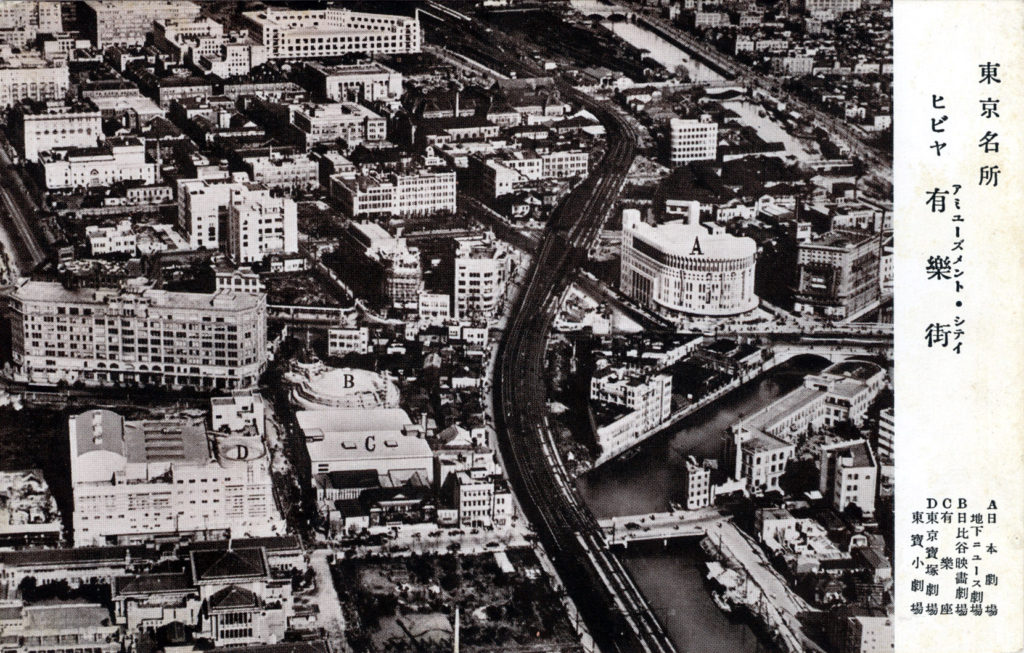
Aerial view of Yurakucho “Amusement City”, c. 1935. Tokyo Central Station can be partially seen at top-center; Yurakucho Station is at center. In 1933, three high-class theaters of several thousand seats were built in Tokyo’s Yurakucho district, within easy walking-distance of the station, by property magnate Kobayashi Ichizo, who had made his money developing the Osaka-Kobe railway and organizing the all-girl Takarazuka Revue at Takarazuka, Japan.
In the image above, the three new theaters were clustered together near the Imperial Hotel (partially visible at lower-left), including the (B) Hibiya Eiga Gekijo, (C) Yurakuza Theater, and the (D) Toho (aka Takarazuka) Gekijo – all three within easy walking distance of Yurakucho Station near the rival 4000-seat (A) Nichigeki Theater.
See also:
Yurakucho (Tokyo) Station Opening, 1910
Takarazuka Gekijo, Tokyo
Nippon Theater (Nichigeki)
“Kobayashi’s bold plan [of building three high-class theaters in Yurakucho] was executed after careful planning, starting with an exhaustive survey of the crowds of train riders passing through Yurakucho station. The vast majority were employees working in the offices in the area. To pull crowds such as this into his new theaters, he needed to charge popular (low) prices, which could be done only by assembling massive audiences for a single showing. He aimed for the casual moviegoer, the after-hours office crowd, and families in town for the weekend.”
– The Imperial Screen: Japanese Film Culture in the Fifteen Years’ War, 1931-1945, by Peter B. High, 2003
The place name, Yurakucho (‘Quarter pleasure can be had’), dating from the Meiji period, arises from an altered pronunciation of Urakusai. Oda Urakusai was the brother of Tokugawa Iyeyasu’s military commander and was first to settle in the area near present-day Sukiyabashi, constructing his residence and teahouse along Sotobori moat in the 17th century. The moat can still been seen in the c. 1935 postcard image above.

